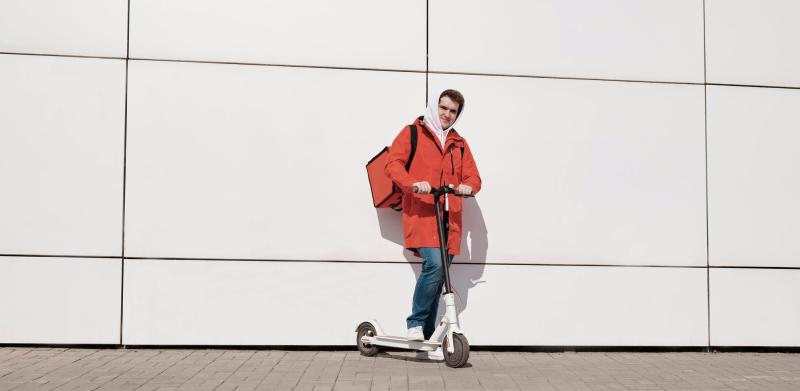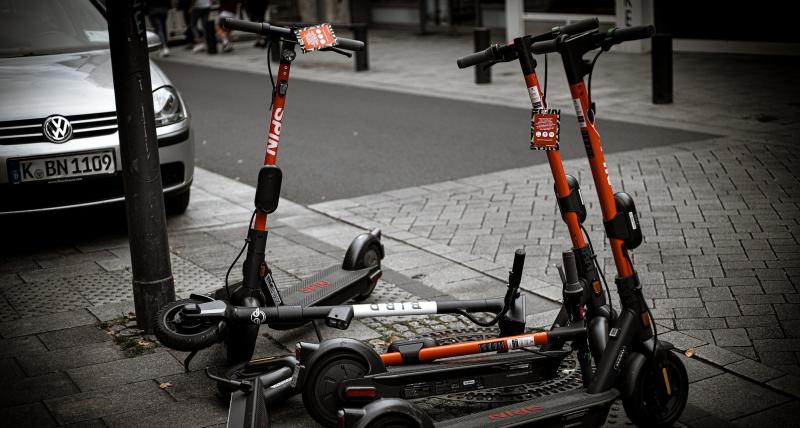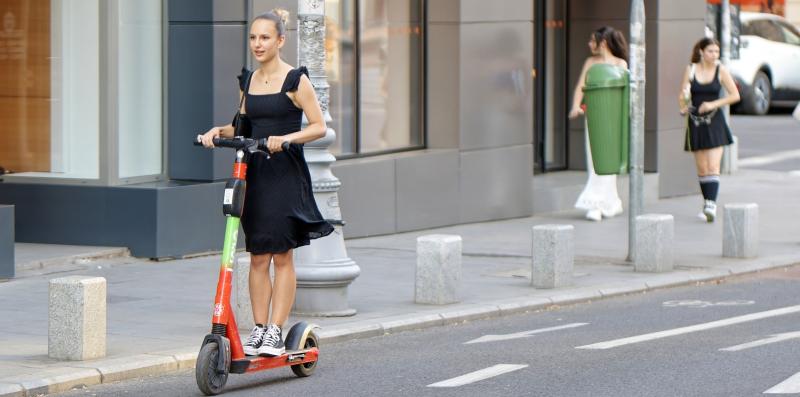Riding an electric scooter in rainy weather can be a challenge, but with the right preparation and techniques, you can enjoy a safe and comfortable ride even when it’s wet outside. Rain affects traction, visibility, and the overall handling of your scooter, so it's essential to take extra precautions. In this guide, we’ll cover everything you need to know about riding an electric scooter in rainy weather, from safety tips to maintenance practices.
Is It Safe to Ride an Electric Scooter in the Rain?
Riding an electric scooter in the rain is possible, but it requires extra caution and preparation. Not all electric scooters are designed to handle wet conditions, so it’s important to check your scooter’s water-resistance rating (usually indicated by an IP rating) before heading out in the rain. If your scooter is not rated for rain, it’s best to avoid wet conditions to prevent damage to the electrical components.
Tips for Riding an Electric Scooter in Rainy Weather
1. Check Your Scooter’s Water Resistance
Before riding in the rain, make sure your electric scooter has a suitable water-resistance rating. Many scooters come with an IP (Ingress Protection) rating that indicates how well they can handle water exposure:
- IP54: Limited protection against splashing water. Suitable for light rain but not for heavy downpours.
- IP65/IP67: Offers better protection against rain and wet conditions, but avoid submerging the scooter in water.
Pro tip: If your scooter doesn’t have a water-resistant rating, consider investing in a waterproof cover or avoid riding in wet conditions.
2. Wear Proper Rain Gear
Staying dry and comfortable is key to a safe ride in rainy weather. Equip yourself with proper rain gear to protect yourself from getting soaked:
- Waterproof Jacket and Pants: Wear a breathable waterproof jacket and pants to keep you dry. Opt for reflective gear to increase your visibility in low-light conditions.
- Waterproof Gloves: Use waterproof gloves to keep your hands warm and dry. Wet hands can make it harder to grip the handlebars, affecting control.
- Non-Slip Shoes: Choose waterproof shoes with a non-slip sole to maintain good traction on wet surfaces.
3. Reduce Your Speed
Rain reduces the traction between your scooter’s tires and the road, making it easier to skid or lose control. To stay safe, reduce your speed and avoid sudden acceleration or braking. This allows you more time to react to slippery spots and unexpected obstacles.
Best practice: Ride at a moderate, steady pace and maintain a longer stopping distance between you and other vehicles or obstacles.
4. Use Both Brakes Gently
Braking suddenly in wet conditions can cause your scooter to skid, especially if you only use one brake. Apply both the front and rear brakes gently to slow down gradually. This helps distribute braking force evenly and reduces the risk of losing control.
- Use Gentle Pressure: Avoid hard braking. Instead, use gentle, progressive pressure on both brakes to slow down smoothly.
- Keep Your Weight Balanced: Shift your weight slightly back when braking to improve stability and prevent the front wheel from slipping.
5. Avoid Puddles and Slippery Surfaces
Puddles can hide hazards like potholes, debris, or uneven surfaces that may cause you to lose balance. Additionally, painted lines, metal surfaces, and wet leaves can become extremely slippery when wet. Here’s how to navigate safely:
- Avoid Deep Puddles: Steer clear of deep puddles that could hide obstacles or cause water to splash onto the electrical components of your scooter.
- Stay Clear of Metal Surfaces: Avoid riding over metal grates, manhole covers, and other metal surfaces, as they become very slippery when wet.
- Watch Out for Wet Leaves: Wet leaves can be as slippery as ice. Slow down and avoid riding over them whenever possible.
6. Increase Your Visibility
Rain reduces visibility for both you and other road users. To stay safe, make sure you’re easily visible to others:
- Use Lights: Turn on your scooter’s front and rear lights, even during the day, to make yourself more visible. If your scooter doesn’t have built-in lights, consider adding a set of battery-powered or USB-rechargeable lights.
- Wear Reflective Gear: Add reflective tape or wear a high-visibility vest to ensure you’re seen by other drivers, especially in low-light conditions.
- Avoid Fogging: If you wear glasses or a helmet with a visor, use an anti-fog spray to keep your vision clear in wet conditions.
7. Maintain Proper Tire Pressure
Properly inflated tires provide better grip and control, especially in wet conditions. Check your tire pressure before heading out and inflate the tires to the recommended PSI range. Under-inflated tires can decrease traction, making it harder to control your scooter on slippery surfaces.
Pro tip: Consider slightly reducing the tire pressure for better traction on wet roads, but don’t go below the manufacturer’s recommended range.
8. Keep Your Electric Components Dry
While many electric scooters are designed to handle light rain, it’s still a good idea to protect the electrical components, such as the battery, display, and motor. Here’s how:
- Use a Waterproof Cover: If your scooter doesn’t have a high water-resistance rating, consider using a waterproof cover to protect the battery and display during rainy rides.
- Avoid Riding in Heavy Downpours: If the rain becomes too intense, find a sheltered spot to wait until it lightens up. Riding in heavy rain increases the risk of damaging the scooter’s electrical components.
9. Clean and Dry Your Scooter After Riding in the Rain
After a rainy ride, it’s important to clean and dry your scooter to prevent rust, corrosion, and other damage. Here’s what to do:
- Wipe Down the Scooter: Use a soft cloth to wipe down the scooter’s frame, handlebars, and wheels. Pay attention to electrical components and connections, ensuring they’re dry.
- Inspect for Water Damage: Check the battery, motor, and wiring for any signs of water damage. If you notice any issues, allow the scooter to dry fully before using it again.
- Lubricate Moving Parts: Apply a light layer of lubricant to the chain (if applicable) and other moving parts to prevent rust.
Real-Life Example: Riding an E-Scooter Safely in the Rain
Alex, an electric scooter commuter in Seattle, regularly rides his scooter in rainy weather. Before each ride, he checks the tire pressure, wears waterproof gear, and equips his scooter with extra lights for visibility. After every rainy ride, he takes a few minutes to dry the scooter and inspect the battery for water exposure. By following these precautions, Alex has managed to stay safe and keep his scooter in excellent condition, even in the wet Pacific Northwest weather.
Conclusion: How to Ride an Electric Scooter in Rainy Weather
Riding an electric scooter in rainy weather requires extra caution and preparation, but with the right techniques, you can stay safe and enjoy your ride. By checking your scooter’s water resistance, wearing proper rain gear, reducing your speed, and avoiding slippery surfaces, you’ll minimize the risks associated with wet conditions. Don’t forget to clean and dry your scooter after every rainy ride to keep it in top shape. With these tips, you’ll be ready to tackle rainy days with confidence.



